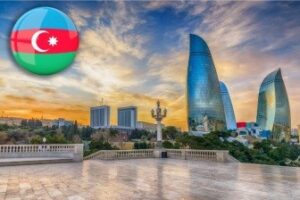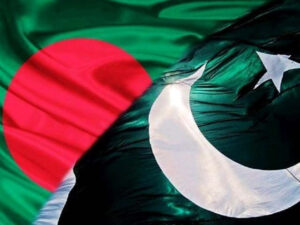The Diverse Culture of Uzbekistan

Dating back millennia, Uzbekistan brings a rich history of culture and civilization. As one of the most ancient places still inhabited by humans, the history of Uzbekistan dates back more than 1 million years, according to archaeologists. With Stone Age settlements such as Kulbulak and Obi Rakhmon and productive land, good water sources and abundance of heat that contributed to development of farming, Uzbekistan is rich in every sense of the word.
Located at the crossroads of the Silk Road, having more than 7,000 monuments from various civilizations, many of which are on the Unesco World Heritage List, and a rich history in the world’s major religions such as Zoroastrianism, Buddhism, Judaism, Christianity and Islam, Uzbekistan provides a great destination for tourism
The ancient Nomadic Turkic Tribes, Greeks, Arabs, Chinese, Russians, and Persians have all contributed to culture of Uzbekistan, which is considered the epitome of Central Asian, crossroads cultures.
Dance Art of Uzbekistan
Uzbek dance has been formed mostly by the ritual gestures of different religions and imitation of animals for thousands of years. UNESCO listed the Khorezmian dancing style Lazgi describes the imitation of Adam’s first move after a soul placed on him by staying still and starting to move with the tips of fingers. We can find exactly the same description in all holy books believing in Adam.
We can see the evidence of it ancient age in the archeological items, frescos of citadels and ceramic dishes, miniatures: wall paintings of dancing couples in Toprak Kala ruins (II-VI centuries); rock picture “Dancing lady” of Chelak region (Samarkand) (V century); a religious ritual dance carved on the Yakkabog stone (Kashkadarya) (VII century); miniature of Mahmud Muzakhhiba – “Dancers” and others.
Traditional Uzbek music
Traditional Uzbek music is one of the means of understanding the peculiarity of the Uzbek nation. Because music and a song express a nation’s dreams, wishes, nature, mood, and intentions. As an example, we can mention the song “Sust Khotin” which has been sung throughout history to call rain during a drought period or a song “Oblo baraka” which has been sung by men in summer and autumn asking for a good harvest.
We can witness the deep history of traditional Uzbek music by seeing images of musicians, relating to the culture of the Kushan period, depicted on the frieze with a stringed instrument in the form of a harp in his hand, the other with a wind instrument similar to a flute, and the third with an oblong double-sided drum.

From this, we can conclude that the Kushans and Sogdians knew the main types of instruments and used them both solo and in an ensemble.
Due to the numerous types of musical instruments, Uzbek national music is one of the most colorful not only among Central Asian countries but also in the world
Here are some main Uzbek musical instruments: Kayrok/Qayroq (stone castanets), doira/doyra (tambourine), Nay/Nai (flute), Rubab/Rubob (a lute-like instrument), Tanbur (a fretted string instrument), Dutor/Dutar (long-necked two-stringed lute), Sato (long-necked lute), Qobuz/Kobuz/Kobyz (Two-string fiddle), Karnai/Karnay (a long wind instrument), Surnai/Surnay (a wind instrument), Nogora/Nagara (drum with a rounded back and a hide head, usually played in pairs), Gijjaz/Ghijak (a group of related spike fiddles).
Painting and Fine Arts
Oriental craftsmen always were renowned for own peculiar fine talent, which is shown in full in decoration and adornments of magnificent palaces, mausoleums and other religious buildings.
As a rule, general fine art works include ornament, patterns and calligraphy. Islamic traditions forbid to image people and animals, therefore craftsmen started developing more abstract directions, bringing them to perfection. Later a new direction appeared in Uzbekistan fine art. It was the miniature, small bright colorful pictures lacquered, which decorated palaces and rich houses.

Uzbekistan fine art was in unbelievable flourishing during the general cultural boom in 14-15th centuries, the epoch of Timurid Dynasty. Ancient Samarkand mausoleums preserved details of wonderful landscape paintings. Some palaces of Amir Temur were decorated with scenic pictures of Tamerlane, his wives, sons and associates and scenes of rich feasts. The great medieval artist was the inimitable master of oriental miniature Kamoliddin Behzod.
The next rise of Uzbekistan fine art dates back to the 19th century. The miniature art reaches its highest flourishing. It is glorified by Akhmad Donish (1827-1897), Abdulkhalik-Makhmum and others.
The traditions reflecting the multinational nature and culture of Uzbekistan are omnipresent in its music, dance, painting, applied arts, language, cuisine, and clothing. Each region of Uzbekistan has its own unique shades as well, which are most clearly manifested in national dress and local dialects.
To get familiar with such richness and diversity, one must travel around the whole country, but the festivals of Uzbekistan are a great events for those who want to see the whole diversity of culture in Uzbekistan at one place. The festivals attract creative souls from all regions of the country, and here that you can see the full assortment of Uzbek dances, music, applied arts, etc.


